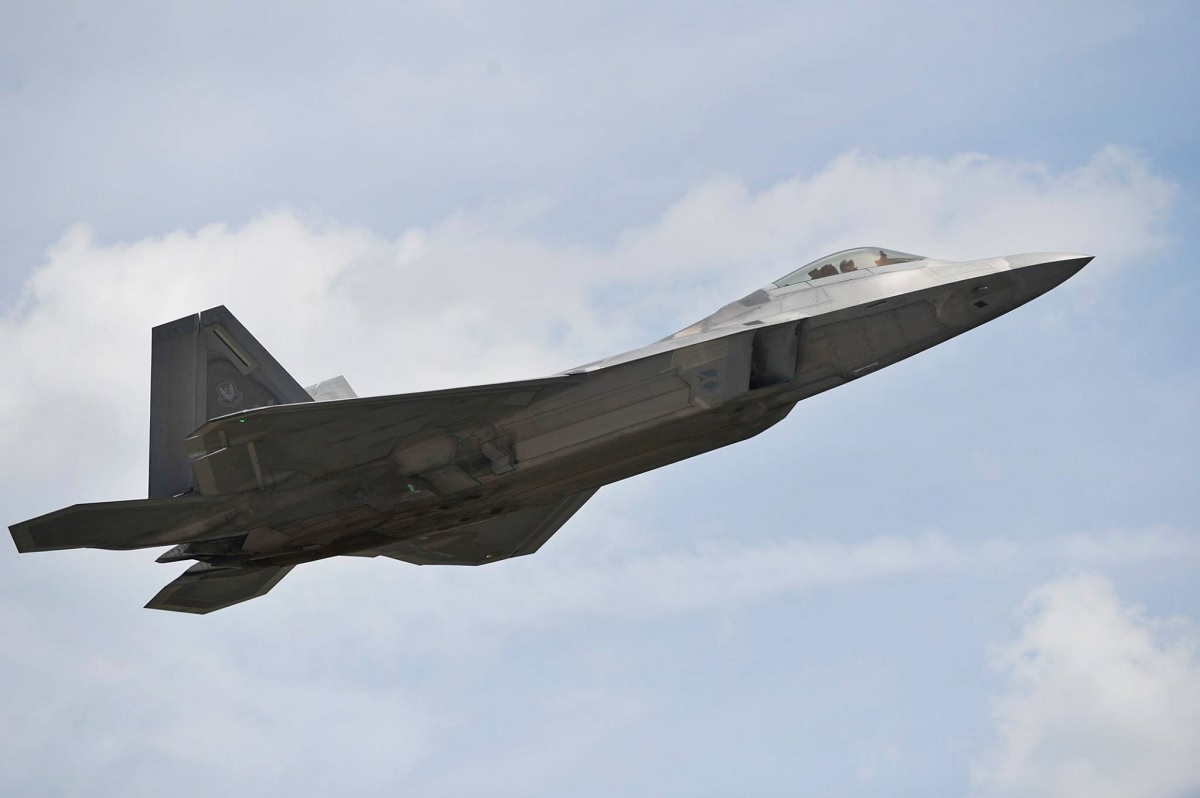“The F-22s in general require regular coating maintenance but there haven’t been any with coatings flying off in the AOR that would require Lockheed Martin to develop a new coating”
As we have reported on Feb. 1, 2017, Lockheed Martin recently completed the first F-22 Raptor at the company’s Inlet Coating Repair (ICR) Speedline facility, where periodic maintenance is performed to maintain the special exterior coatings that contribute to the Raptor’s Very Low Observable (VLO) radar cross-section.
We also claimed that during ICRs Lockheed Martin applies a new, self-developed, more resistant radar-absorbing coating to F-22s who (as we have explained in a Dec. 6, 2016 post) were thought to have started to lose their radar-absorbing coating during a military operation in Syria.
But the reason why Lockheed Martin is performing ICRs on the U.S. Air Force (USAF) 5th Generation fighter is not currently linked to the issue the aircraft experienced in Syria.
In fact, a source close to the F-22 Raptor program, who wishes to remain anonymous, explains that “The ICR’s that are currently being performed are for the oldest of the jets which are used to train new F-22 pilots. If you notice in the LM press release there is a quote from the 325th Maintenance Group Deputy Commander. The 325th Fighter Wing is home to the 43rd Fighter Squadron who owns the oldest non-test jets in the fleet with the oldest coatings that are now almost 15 years old. This is planned and scheduled maintenance that has been in the works for a few years and the Speedline is to help take some of the load off of the depot. The improved coatings are part of the evolution the LO coatings continually go through to improve the life and performance.”
Moreover, our source adds that “This isn’t in response to any deployed issues. There have been jets down range but those have not been the jets that require ICR’s. At least not yet. The jets, in general, require regular coating maintenance but there haven’t been any with coatings flying off in the AOR that would require LM to develop a new coating.”
Finally, our source explains that “Even though deployed Raptors do require coating maintenance, I can say with confidence that there was no coating issue beyond what we see with normal LO Mx. Coating performance before, during, and after the deployment have remained the same. As the value of an asset as the Raptor is we would have had to pause Raptor operations if an issue would cause a compromise to its capabilities. It would have been a very big deal if that was the case considering how often we are requested by not the only U.S. but partners nations also.”
Stay tuned for additional updates if further details on this story had to come to light.

Photo by U.S. Air Force

